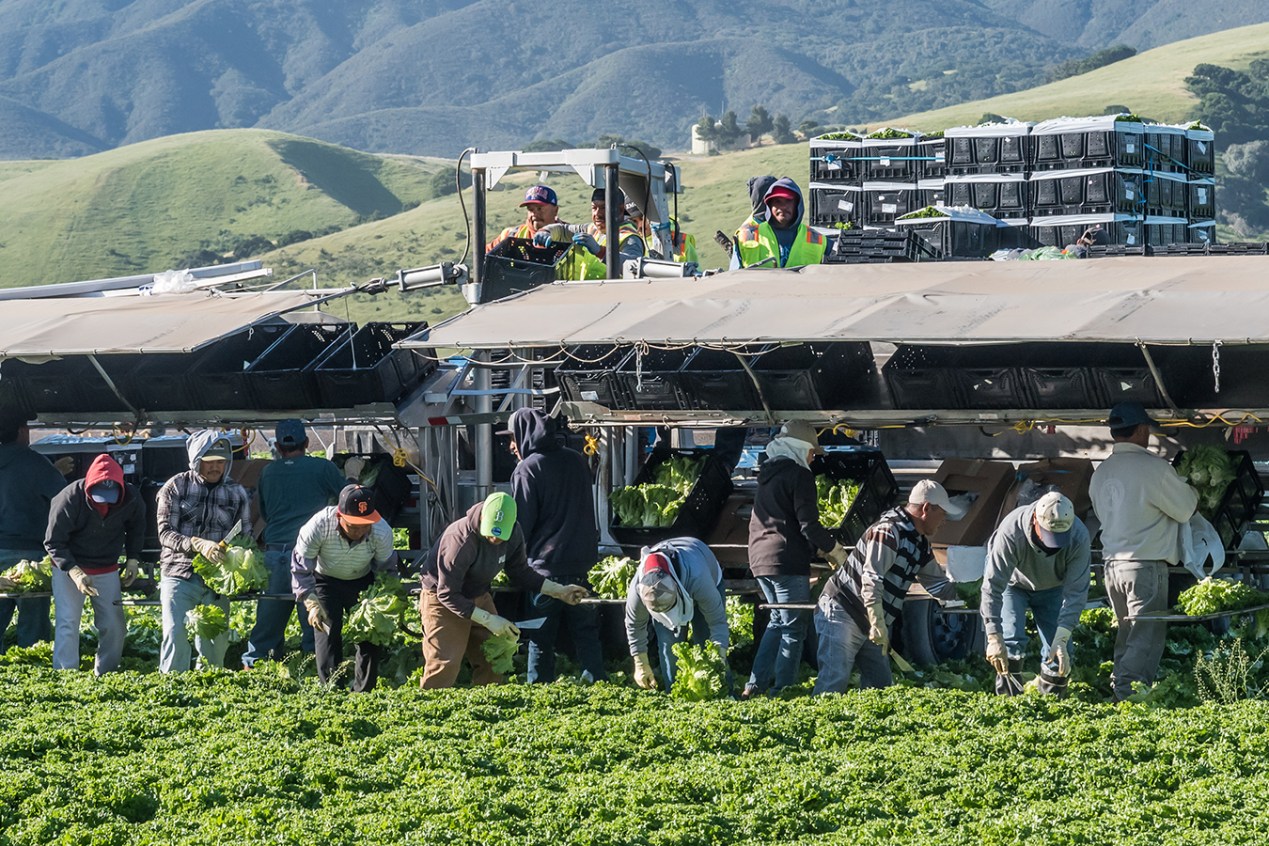That bag of frozen cauliflower sitting inside your freezer likely sprang to life in a vast field north of Salinas, Calif. A crew of men and women here use a machine to drop seedlings into the black soil. Another group follows behind, stooped over, tapping each new plant.
It is backbreaking, repetitive work. Ten-hour days start in the cold, dark mornings and end in the searing afternoon heat.
More than 90 percent of California’s crop workers were born in Mexico. But in recent years, fewer have migrated to the U.S., according to the U.S. Department of Labor. Researchers point to a number of causes: tighter border controls; higher prices charged by smugglers; well-paying construction jobs and a growing middle-class in Mexico that doesn’t want to pick vegetables for Americans.
As a result, the average farmworker is now 45 years old, according to federal government data. Harvesting U.S. crops has been left to an aging population of farmworkers whose health has suffered from decades of hard labor. Older workers have a greater chance of getting injured and of developing chronic illnesses, which can raise the cost of workers’ compensation and health insurance.
“The slowdown is happening,” said Brent McKinsey, a third-generation farmer and one of the owners of Mission Ranches in Salinas. “You start to see your production drop, but it’s difficult to manage because there aren’t the younger people wanting to come in and work in this industry.”
After a long day hunched over, cutting and bunching mustard leaves, Gonzalo Picazo Lopez, a farmworker, said the pain shooting down his leg is acting up. Lopez has been working in the fields since the 1970s, when he crossed over from Mexico. At 67 years old, he looks timeworn, with silver hair and a white beard. Deep lines mark his face.
As Lopez described how he carefully picks the leaves with his right hand and bunches with his left, he opened and closed his fingers with difficulty.
“In 2015 my left hand started to hurt,” said Lopez. “I went into work one morning and my hand was cold — ice cold.”
Lopez is a U.S. citizen and has Medicare. He hopes to work for almost another decade, until his wife, who is 61 and picks broccoli, can collect her Social Security.
Chronic pain is a common complaint at Clinica de Salud in Salinas. Nearly all of the patients at this community clinic are farmworkers. Many don’t have health insurance and pay what they can for medical care. Those who have immigration papers, rely on Medicaid.
Oralia Marquez, a physician’s assistant at the clinic, said older farmworkers often develop arthritis, back pain, foot infections and breathing problems from pesticides.
Many of her patients, like Amalia Buitron Deaguilera also struggle with diabetes. Deaguilera is 63. She has Medicaid for insurance, but she’s losing her vision from the disease.
“When I was working in fields,” said Deaguilera, “I never had time to take care of myself and my health.”
Workers in the fields who have diabetes often cannot take their insulin because they have no place to refrigerate it, said Marquez. And they miss doctors’ appointments during the busy harvesting seasons because many don’t get paid when they don’t work.
“Most of our patients want just something to relieve the pain and to continue working,” she said. “Most of the time they don’t ask for disability. They don’t ask for days off. They say they don’t have time to miss days.”
Field laborers often delay health care, and that can lead to serious medical problems. Compared to older whites, older Latino farmworkers are much more likely to end up in the hospital, according to researchers at the Central Valley Health Policy Institute at California State University, Fresno.
Faced with an aging and dwindling workforce, Mission Ranches’ McKinsey says farmers are trying to mechanize planting and harvesting to reduce their labor needs.
But machines can only do so much, McKinsey said. You can replace the human hand in a factory, perhaps. But out here, the fields are bumpy and the winds are strong and you need people to bring the plants to life.
KFF Health News’ coverage of these topics is supported by
John A. Hartford Foundation and
The SCAN Foundation
